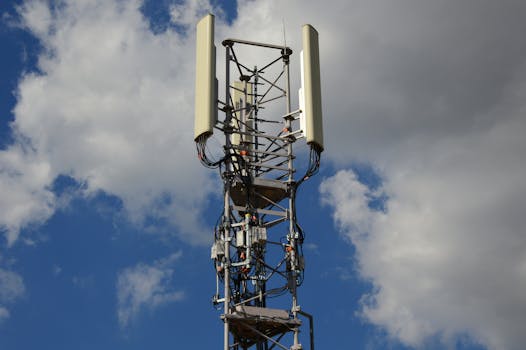
Comparative Analysis of 4G vs 5G Performance Metrics
Comparative Analysis of 4G vs 5G performance metrics is a crucial aspect of understanding the advancements in wireless network technology. The fifth generation of wireless network, popularly known as 5G, has been making waves in the tech world with its promise of faster data speeds, lower latency, and greater connectivity. In this article, we will delve into the key performance metrics of 4G and 5G networks, comparing and contrasting their capabilities.
Introduction to 4G and 5G Networks
4G, or the fourth generation of wireless network, was first introduced in the late 2000s and has been the standard for mobile networks ever since. It offers download speeds of up to 100 Mbps and upload speeds of up to 50 Mbps. However, with the increasing demand for faster data speeds and lower latency, the need for a newer, more advanced network arose, giving birth to 5G. 5G promises download speeds of up to 20 Gbps and latency as low as 1 ms, making it a game-changer for various industries such as healthcare, finance, and entertainment.
Performance Metrics: 4G vs 5G
When it comes to performance metrics, 5G outshines 4G in several areas. One of the key differences is the data speed. 5G offers significantly faster download and upload speeds, making it ideal for applications that require high-bandwidth, such as video streaming, online gaming, and virtual reality. Another important metric is latency, which refers to the time it takes for data to travel from the user’s device to the server and back. 5G has a much lower latency than 4G, which is crucial for real-time applications such as online gaming, video conferencing, and remote healthcare.
In addition to data speed and latency, 5G also offers greater connectivity and capacity than 4G. This means that more devices can be connected to the network at the same time, making it ideal for applications such as smart cities, IoT, and industrial automation. Furthermore, 5G has a more advanced network architecture than 4G, which allows for greater flexibility, scalability, and reliability.
Real-World Applications: 4G vs 5G
The differences in performance metrics between 4G and 5G have significant implications for various industries and applications. For instance, in the healthcare sector, 5G’s low latency and high data speeds enable remote healthcare services such as telemedicine, remote patient monitoring, and medical imaging. In the finance sector, 5G’s high security and low latency enable fast and secure transactions, making it ideal for applications such as mobile payments and online banking.
In the entertainment sector, 5G’s high data speeds and low latency enable seamless video streaming, online gaming, and virtual reality experiences. In addition, 5G’s greater connectivity and capacity enable the widespread adoption of IoT devices, making it ideal for applications such as smart homes, smart cities, and industrial automation.
Conclusion
In conclusion, the comparative analysis of 4G vs 5G performance metrics highlights the significant advancements in wireless network technology. 5G’s faster data speeds, lower latency, and greater connectivity and capacity make it an ideal choice for various industries and applications. As the adoption of 5G continues to grow, we can expect to see significant improvements in the way we live, work, and interact with each other. Whether it’s remote healthcare, online gaming, or smart cities, 5G has the potential to revolutionize the way we experience technology.




